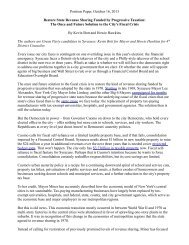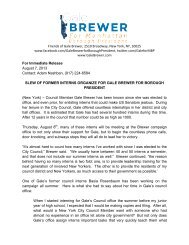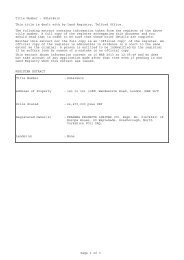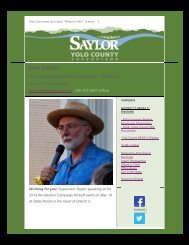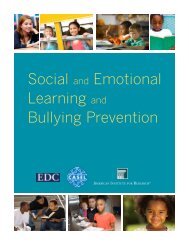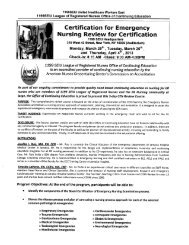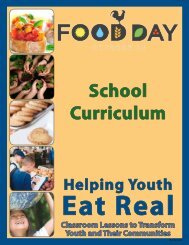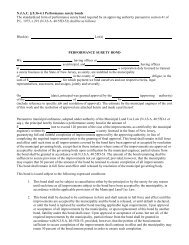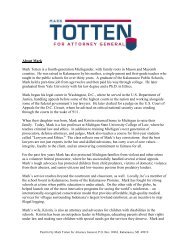Create successful ePaper yourself
Turn your PDF publications into a flip-book with our unique Google optimized e-Paper software.
Lesson 2: Mostly Plants<br />
— Getting Started —<br />
Overview<br />
This lesson starts with students checking in on their<br />
Eat Real Action Plan and sharing their triumphs as<br />
well as their challenges. Students then confirm why it<br />
is very important to eat whole plant foods that they<br />
can get from supermarkets and also farms and gardens<br />
close to where they live. Plants contain hundreds of<br />
nutrients that their bodies need. That’s why we want<br />
to eat “Mostly Plants” and have small portions of lean<br />
meat, poultry, fish, and low fat dairy foods — and<br />
when possible, have these from animals raised in a<br />
humane and sustainable way. Students look at illustrations<br />
of different plants and from these, students gain<br />
the appreciation that they eat many different parts<br />
of a variety of plants. They learn about filling half of<br />
their plates with fruits and vegetables and a quarter<br />
of their plates with grains. Remember from the last<br />
lesson that these foods should be whole rather than<br />
overly processed. Students are encouraged to share<br />
what they have learned with their families and suggest<br />
their families to buy and eat more plant-based foods<br />
together.<br />
Behavior Change Objective<br />
As a result of this lesson, students will have threequarters<br />
of their plate be whole, plant foods.<br />
Learning Objectives<br />
Students will be able to:<br />
• assess if they have been successful at following<br />
their Eat Real Action Plan;<br />
• describe how a diet high in plant foods and low in<br />
saturated fat and cholesterol is good for our health;<br />
• list the health benefits of eating roots, stems,<br />
leaves, flowers, fruits, and seeds;<br />
• describe how to create a plate that has mostly<br />
plant-based foods.<br />
Background for Teachers<br />
If you have ever tried to change your own behaviors<br />
to be more healthful, you will probably agree that it<br />
is well worth the effort, but effort it is! Change comes<br />
slowly and it takes time and commitment to develop<br />
and maintain healthful habits. No doubt, change will<br />
be challenging to your students as well. We encourage<br />
you to check in with your students about their Eat<br />
Real Action Plan and we hope that you continue to<br />
make time to influence and encourage your students<br />
to adopt the <strong>Food</strong> <strong>Day</strong> Eating Goals of “Eat Real,”<br />
“Mostly Plants,” and “Not Too Much” of overly<br />
processed foods.<br />
The focus of this lesson is the importance of having<br />
a diet with a strong foundation of whole plant<br />
foods. While animal foods are often rich in proteins,<br />
vitamins, and minerals, they are also often high in<br />
saturated fat and cholesterol. Those substances start<br />
clogging blood vessels even in youths and increase<br />
the risk of heart attacks as people get older. Plants<br />
are truly special. Not only are they essential for all<br />
life on earth, but they produce hundreds of natural<br />
chemicals, such as vitamins and and minerals that<br />
help every organ — from our heart to our brain — in<br />
our body working right.<br />
The U.S.D.A.’s MyPlate recommends that about threequarters<br />
of our plates be plant foods: half fruits and<br />
vegetables and about one-quarter grains, of which at<br />
least half should be whole grains.<br />
When students have the opportunity to experience<br />
whole plant foods with all their senses, as they get<br />
to do when they garden, cook, and eat foods from<br />
plants, they build their appreciation for eating plants<br />
just as they come from nature. Also, since foods from<br />
plants often have complex tastes that have bitter and/<br />
or sour flavors, students need to try these foods many,<br />
many times to develop a liking for them.<br />
View this lesson as a way to build an appreciation<br />
for eating plants, and for students to really believe<br />
that when they eat whole foods from plants, they are<br />
making choices that are good for their own health<br />
and good for the health of the planet.<br />
<strong>Food</strong> <strong>Day</strong> Lessons | 31



